


The Peabody Museum has long published a variety of print and electronic publications relating to collections, projects, and excavations conducted by Peabody Museum staff and Department of Anthropology faculty.
Current publications can be found under Books with links to purchase, while pre-1970s publications include links to texts when available.
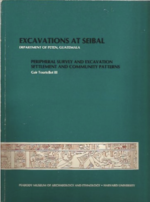
Peripheral Survey and Excavation, Settlement and Community Patterns
Seibal is a major ruin of the southern Maya lowlands, its vast ceremonial center covering several high hills on the banks of the Pasion River in the Guatemalan Department of Peten. In five volumes published over a 15-year period, the archaeological team headed by Gordon R. Willey presents a comprehensive review of their fieldwork from 1964 to 1968 and the results of many years of subsequent data analysis. The volumes also report on explorations in the peripheral settlements outside of the Seibal center and provide a regional view of the evolution of lowland Maya culture from the Middle and Late Preclassic through the Late Classic periods.
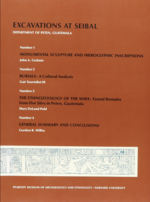
Volume 1. Monumental Sculpture and Hieroglyphic Inscriptions
Volume 2. Burials
Volume 3. The Ethnozoology of the Maya
Volume 4. General Summary and Conclusions
Seibal is a major ruin of the southern Maya lowlands, its vast ceremonial center covering several high hills on the banks of the Pasion River in the Guatemalan Department of Peten. In five volumes published over a 15-year period, the archaeological team headed by Gordon R. Willey presents a comprehensive review of their fieldwork from 1964 to 1968 and the results of many years of subsequent data analysis. The volumes also report on explorations in the peripheral settlements outside of the Seibal center and provide a regional view of the evolution of lowland Maya culture from the Middle and Late Preclassic through the Late Classic periods.
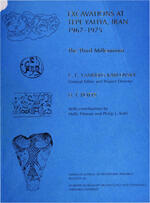
Situated roughly midway between the great cities of the Indus Valley and those of the Mesopotamian plains, Tepe Yahya occupies a special place in our conceptions of relations between these distant territories during the early Bronze Age. Its third-millennium levels, dating from 3000 to 2100 B.C., are particularly important.
In this definitive study, D. T. Potts describes the stratigraphy, architecture, ceramics, and chronology of the site and presents a full inventory of the small finds. Holly Pittman contributes comprehensive illustrations and a discussion of the seals and sealings, and Philip Kohl provides an analysis of the carved chlorite industry. In a foreword and afterword, project director C. C. Lamberg-Karlovsky tells the story of the archaeological expedition and reflects on the contributions of the Tepe Yahya project.
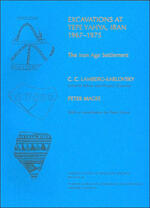
Tepe Yahya provides a stratigraphic sequence that stretches some 6,000 years, from the Neolithic period to the early centuries AD. As a result, the site is critical for understanding cultural processes in southeastern Iran. In this fifth volume of results of the excavations at Tepe Yahya, Peter Magee presents evidence from the Iron Age occupation of the site. Looking beyond the epigraphic and historical data and examining the insights provided by the artifactual record, Magee describes how a small settlement, located some distance from the main centers of power, came into being and was affected by the emergence of the Achaemenid imperial system, which stretched from Pakistan to Libya.
This milestone volume describes and interprets excavations at one of the greatest late prehistoric sites in the southeastern United States. Lake George reached its zenith between the thirteenth and fifteenth centuries A.D., during the florescence of the Mississippian culture. This is a detailed analysis of the site and its relationship to the corpus of Southeastern archaeology.
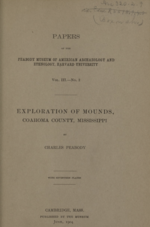
Peabody Museum Papers Volume 3, no. 2
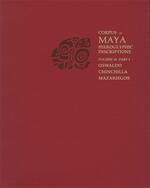
For more than 45 years, the Peabody Museum has been publishing The Corpus of Maya Hieroglyphic Inscriptions. The goal of this unique series of folio volumes is to document in photographs and detailed line drawings all known Maya inscriptions and their associated figurative art to advance the study of the ancient Maya. When complete, the Corpus will have published the inscriptions from over 200 sites and 2,000 monuments. The series has been instrumental in the remarkable success of the ongoing process of deciphering Maya writing, making available hundreds of texts to epigraphers working around the world, and to source communities in in Honduras, Guatemala, and Mexico.
Each volume in the series consists of three or more fascicles, which examine an individual site or group of neighboring sites and include maps of site location and plans indicating the placement monuments within each site. Each inscription is reproduced in its entirety in both photographs and line drawings with descriptive texts.
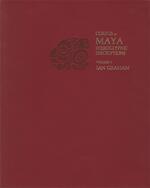
For more than 45 years, the Peabody Museum has been publishing The Corpus of Maya Hieroglyphic Inscriptions. The goal of this unique series of folio volumes is to document in photographs and detailed line drawings all known Maya inscriptions and their associated figurative art to advance the study of the ancient Maya. When complete, the Corpus will have published the inscriptions from over 200 sites and 2,000 monuments. The series has been instrumental in the remarkable success of the ongoing process of deciphering Maya writing, making available hundreds of texts to epigraphers working around the world, and to source communities in in Honduras, Guatemala, and Mexico.
Each volume in the series consists of three or more fascicles, which examine an individual site or group of neighboring sites and include maps of site location and plans indicating the placement monuments within each site. Each inscription is reproduced in its entirety in both photographs and line drawings with descriptive texts.
Volume 1 includes a Spanish translation of the Introduction text and six appendices: sources of sculpture and their codes; list of abbreviations and symbols used in the Corpus series; table of tun-endings between 8.1.15.0.0 and 10.9.3.0.0; a complete Calendar Round in tabular form, giving the position of tun-endings between 8.1.15.0.0 and 10.9.3.0.0; a method for the quick computation of Calendar Round position, by John S. Justeson; and Moon Age tables, by Lawrence Roys.
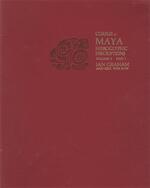
For more than 45 years, the Peabody Museum has been publishing The Corpus of Maya Hieroglyphic Inscriptions. The goal of this unique series of folio volumes is to document in photographs and detailed line drawings all known Maya inscriptions and their associated figurative art to advance the study of the ancient Maya. When complete, the Corpus will have published the inscriptions from over 200 sites and 2,000 monuments. The series has been instrumental in the remarkable success of the ongoing process of deciphering Maya writing, making available hundreds of texts to epigraphers working around the world, and to source communities in in Honduras, Guatemala, and Mexico.
Each volume in the series consists of three or more fascicles, which examine an individual site or group of neighboring sites and include maps of site location and plans indicating the placement monuments within each site. Each inscription is reproduced in its entirety in both photographs and line drawings with descriptive texts.
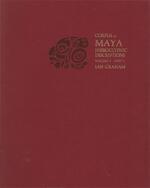
For more than 45 years, the Peabody Museum has been publishing The Corpus of Maya Hieroglyphic Inscriptions. The goal of this unique series of folio volumes is to document in photographs and detailed line drawings all known Maya inscriptions and their associated figurative art to advance the study of the ancient Maya. When complete, the Corpus will have published the inscriptions from over 200 sites and 2,000 monuments. The series has been instrumental in the remarkable success of the ongoing process of deciphering Maya writing, making available hundreds of texts to epigraphers working around the world, and to source communities in in Honduras, Guatemala, and Mexico.
Each volume in the series consists of three or more fascicles, which examine an individual site or group of neighboring sites and include maps of site location and plans indicating the placement monuments within each site. Each inscription is reproduced in its entirety in both photographs and line drawings with descriptive texts.
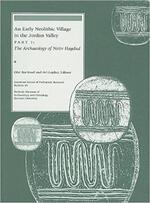
The "Neolithic Revolution" in Southwestern Asia involved major transformations of economy and society that began during the Natufian period in the southern Levant and continued through Pre-Pottery Neolithic A (PPNA) and into Pre-Pottery Neolithic B (PPNB). The authors describe that process at Netiv Hagdud, with additional material from the Natufian site of Salibiya IX. Includes reports on the archaeology, lithics, bone tools, lithic use-wear, marine shells, burials, and plant remains.
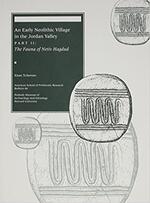
The “Neolithic Revolution” in Southwestern Asia involved major transformations of economy and society that began during the Natufian period in the southern Levant and continued through Pre-Pottery Neolithic A (PPNA) and into Pre-Pottery Neolithic B (PPNB). The authors describe that process at Netiv Hagdud, with additional material from the Natufian site of Salibiya IX. Includes reports on the archaeology, lithics, bone tools, lithic use-wear, marine shells, burials, and plant remains.

Situated roughly midway between the great cities of the Indus Valley and those of the Mesopotamian plains, Tepe Yahya occupies a special place in our conceptions of relations between these distant territories during the early Bronze Age. Its third-millennium levels, dating from 3000 to 2100 B.C., are particularly important.
In this definitive study, D. T. Potts describes the stratigraphy, architecture, ceramics, and chronology of the site and presents a full inventory of the small finds. Holly Pittman contributes comprehensive illustrations and a discussion of the seals and sealings, and Philip Kohl provides an analysis of the carved chlorite industry. In a foreword and afterword, project director C. C. Lamberg-Karlovsky tells the story of the archaeological expedition and reflects on the contributions of the Tepe Yahya project.

Tepe Yahya provides a stratigraphic sequence that stretches some 6,000 years, from the Neolithic period to the early centuries AD. As a result, the site is critical for understanding cultural processes in southeastern Iran. In this fifth volume of results of the excavations at Tepe Yahya, Peter Magee presents evidence from the Iron Age occupation of the site. Looking beyond the epigraphic and historical data and examining the insights provided by the artifactual record, Magee describes how a small settlement, located some distance from the main centers of power, came into being and was affected by the emergence of the Achaemenid imperial system, which stretched from Pakistan to Libya.
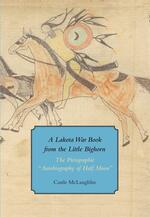
Foreword by Chief Joseph Brings Plenty, Cheyenne River Sioux
Houghton Library Studies 4
Winner, Bookbuilders of Boston/New England Book Show (General Trade, Illustrated)
First Place, NEMA Awards (Books >$500k)
"Transformative." —Candace Greene
The composite nineteenth-century document known as "The Pictorial Autobiography of Half Moon, an Uncpapa Sioux Chief" has at its core seventy-seven drawings made by Lakota warriors of the northern Plains. Found in a funerary tipi on the Little Bighorn battlefield after Custer's defeat in 1876, the drawings are from a captured ledger book that was later acquired by Chicago journalist James "Phocion" Howard. Howard added an illustrated introduction and leather binding and presented the document as the autobiographical work of a "chief" named Half Moon.
Anthropologist Castle McLaughlin probes the complex life history and cultural significance of the ledger and demonstrates that the dramatic drawings, mostly of war exploits, were created by at least six different warrior-artists. Examining how allied Lakota and Cheyenne warriors understood their graphic records of warfare as objects as well as images, McLaughlin introduces the concept of "war books"—documents that were captured and modified by Native warriors in order to appropriate the power of Euroamerican literacy. Together, the vivid first-person depictions in the ledger—now in the collection of Harvard's Houghton Library—make up a rare Native American record of historic events that likely occurred between 1866 and 1868 during Red Cloud's War along the Bozeman Trail.
A complete color facsimile of the Houghton ledger is reproduced in this ground-breaking volume.
Castle McLaughlin is Peabody Museum Curator of North American Ethnology.
"McLaughlin’s latest publication brings readers into the world of the real Crazy Horse. … As McLaughlin explains, these [ledger] drawings are as rich and informative as any Euro‐American literary text"
—Henry Adams, Ruth Coulter Heede Professor of Art History at Case Western Reserve University, The Conversation
"...completely engrossing."—David Wilk, WritersCast: The Voice of Writing
>> read the full review and listen to an interview with Castle McLaughlin
Please request signed copies when ordering by email.
Copublished by Peabody Museum Press and Houghton Library
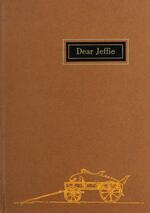
Jeffries Wyman (1814–74), a pioneer anthropologist of nineteenth-century America and one of its great comparative anatomists, was the Hersey Professor of Anatomy at Harvard University and, later, a trustee of the Peabody Museum and professor of American Archaeology and Ethnology.
Wyman wrote the 59 letters in this volume to his only son Jeffie. Dating from 1866, when Jeffie was two, until Wyman’s death in 1874, when Jeffie was ten, the letters reveal a great scientist trying to instill in his son the concepts of acute observation and wonder. Wyman’s charming, quizzical drawings embellish the text, which will be appreciated by children and adults alike.
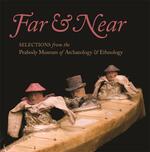
3rd place, 2019 NEMA Awards (Books)
Since its founding in 1886, the Peabody Museum of Archaeology and Ethnology at Harvard University has been collecting, caring for, exhibiting, and researching objects produced by human cultures around the world. This handsomely illustrated, highly portable volume presents a selection of more than 90 objects in honor of the museum’s 150th anniversary in 2016–2017. Dating from Paleolithic times to the present and originating from the Arctic Circle to South Pacific, these selections represent but a fraction of the 1.4 million pieces in the museum’s collections. They range in character from the sacred to the profane, the utilitarian to the highly decorative, the deeply symbolic to the outrageously whimsical.
Chosen by the museum’s curators and staff, the works presented in Far & Near provide a tantalizing glimpse into the wonders of the collections of the Peabody Museum and reflect the skilled artistry of human hands and the endless creativity of the human mind.
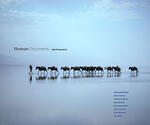
Edited by Charles Warren
Photographs by Michael Rockefeller, Adelaide de Menil, Kevin Bubriski, Christopher James, Jane Tuckerman, Susan Meiselas, and Alex Webb
Winner, 2009 New England Book Show (General Trade, Book and Cover)
First Place, 2010 NEMA Awards (Books Over $10)
Silver Medal, 2010 IPPY Awards (Photo)
Finalist, 2010 Ben Franklin Awards (Arts)
Finalist, 2009 Foreword Magazine Awards (Photo)
In Human Documents, Robert Gardner introduces the work of photographers with whom he has worked over a period of nearly fifty years under the auspices of the Film Study Center at Harvard. Their images achieve the status of what Gardner calls “human documents”: visual evidence that testifies to our shared humanity. In images and words, the book adds to the already significant literature on photography and filmmaking as ways to gather both fact and insight into the human condition. In nearly 100 images spanning geographies and cultures including India, New Guinea, Ethiopia, and the United States, Human Documents demonstrates the important role photography can play in furthering our understanding of human nature and connecting people through an almost universal visual language.
Author and cultural critic Eliot Weinberger contributes the essay “Photography and Anthropology (A Contact Sheet),” in which he provides a new and intriguing context for viewing and thinking about the images presented here.

Manifest | Thirteen Colonies is a photographic project and journey through the repositories of African American material culture found in libraries, museums, and archives of the original thirteen English colonies and Washington, DC. Conceived by photographer Wendel A. White, this project is a personal reliquary of the remarkable evidence of Black agency and racial oppression stored in public collections. Accompanying his imagery, White discusses his approach to finding, selecting, and photographing artifacts—from rare singular objects to more quotidian materials—and highlights their significance as forensic evidence of Black life and history in the United States.
Manifest: Thirteen Colonies will be open to the public at the Peabody Museum of Archaeology & Ethnology, Harvard University from May 18, 2024-April 13, 2025.
Wendel A. White (b. 1956, Newark, NJ) is currently Distinguished Professor of Art at Stockton University and has taught photography at the School of Visual Arts; The Cooper Union for the Advancement of Science and Art; the International Center of Photography; and the Rochester Institute of Technology. His work has received various awards and fellowships, including: Doctor of Arts (hc), Oakland University; Robert Gardner Fellow in Photography, Peabody Museum of Archaeology & Ethnology, Harvard University; John Simon Guggenheim Memorial Foundation Fellowship in Photography; Bunn Lectureship in Photography, Bradley University; three artist fellowships from the New Jersey State Council for the Arts; Graham Foundation for Advanced Studies in the Fine Arts; and New Works Photography Fellowship from En Foco Inc. His work is represented in museum and corporate collections, including the National Gallery of Art, Washington, DC; Mint Museum, Charlotte, NC; Museum of Fine Arts, Houston, TX; and Museum of Contemporary Photography, Chicago, IL; among many others.

Preface by Robert Gardner
Essay by Charles Ramble
Third Place, 2015 New England Book Show (Cover)
Photographer Kevin Bubriski has been visually documenting the country and people of Nepal since his first visit in 1975. Sent as a young Peace Corps volunteer to the northwest Karnali Zone, the country’s remotest and most economically depressed region, he spent three years walking the length and breadth of the Karnali, planning and overseeing construction of gravity flow drinking water pipelines. He also photographed the local villagers, producing an extraordinary series of 35mm and large format black-and-white images. For nearly four decades, Bubriski has maintained his close association with Nepal and its people. Both visual anthropology and cultural history, this remarkable body of photographic work documents Nepal’s evolution from a traditional Himalayan kingdom to a rapidly changing, globalized society. Nepal: 1975–2011 also offers an incisive and comprehensive look at the aesthetic evolution of an important contemporary photographer.
Kevin Bubriski is Assistant Professor of Photography at Green Mountain College in Poultney, Vermont, and was the 2010 recipient of the Robert Gardner Visiting Artist Fellowship at the Peabody Museum of Archaeology and Ethnology at Harvard University.
Co-published with Radius Books.

Winner, 2009 New England Book Show (General Trade, Illustrated)
Silver Medal, 2010 IPPY Awards (Multicultural Non-Fiction Adult)
Silver Medal, 2010 IPPY Awards (Religion & Multi-Cultural)
Bronze Medal, 2009 Foreword Magazine Awards (Religion)
With essays by Ali S. Asani, Carl W. Ernst, and Kamil Khan Mumtaz
Sufism, the mystical path of Islam, is a key feature of the complex Islamic culture of South Asia today. Influenced by philosophies and traditions from other Muslim lands and by pre-Islamic rites and practices, Sufism offers a corrective to the image of Islam as monolithic and uniform.
In Sacred Spaces, Pakistani artist and educator Samina Quraeshi provides a locally inflected vision of Islam in South Asia that is enriched by art and by a female perspective on the diversity of Islamic expressions of faith. A unique account of a journey through the author’s childhood homeland in search of the wisdom of the Sufis, the book reveals the deeply spiritual nature of major centers of Sufism in the central and northwestern heartlands of South Asia. Illuminating essays by Ali S. Asani, Carl W. Ernst, and Kamil Khan Mumtaz provide context to the journey, discussing aspects of Sufi music and dance, the role of Sufism in current South Asian culture and politics, and the spiritual geometry of Sufi architecture.
Quraeshi relies on memory, storytelling, and image making to create an imaginative personal history using a rich body of photographs and works of art to reflect the seeking heart of the Sufi way and to demonstrate the diversity of this global religion. Her vision builds on the centuries-old Sufi tradition of mystical messages of love, freedom, and tolerance that continue to offer the promise of building cultural and spiritual bridges between peoples of different faiths.
Samina Quraeshi is Gardner Fellow and Visiting Artist, Peabody Museum, Harvard University.
Ali S. Asani is Professor of Indo-Muslim and Islamic Religion and Cultures and Director of the Prince Alwaleed bin Talal Islamic Studies Program, with a joint appointment in the Committee on the Study of Religion and the Departments of Near Eastern Languages and Civilizations; Sanskrit and Indian Studies; and African and African-American Studies, at Harvard University.
Carl W. Ernst is William R. Kenan, Jr., Distinguished Professor of Religious Studies at the University of North Carolina at Chapel Hill.
Kamil Khan Mumtaz is an architect living in Pakistan.

Foreword by Robert Gardner
Essay by Bob Connolly
"Best Books 2013...The attraction of Dupont's books is that his photographs exhibit enormous passion and enthusiasm and are an effort to unlock the nature of the relationship between photographer and subject."
—THE Magazine
This publication records acclaimed Australian photographer Stephen Dupont’s journey through some of Papua New Guinea’s (PNG) most important cultural and historical zones: the Highlands, Sepik, Bougainville, and the capital city of Port Moresby. Through images and personal diaries, Dupont’s remarkable body of work captures the human spirit of the people of PNG in their transition from tribalism to globalization. The project was conducted in 2011 with the support of the Robert Gardner Fellowship in Photography given by Harvard’s Peabody Museum of Archaeology & Ethnology.
Piksa Niugini consists of two hardcover books inside a special slipcase. The first volume is a collection of portraits in luscious duotone and 4-color reproduction; the second is a vibrant collection of the diaries, drawings, contact sheets, and documentary photographs that chronicle Dupont’s experience and working process and richly contextualize the more formal images in volume one. An exhibition of Dupont's New Guinea photographs is on display at the Peabody through September 2, 2013.
Dupont’s photographs have received international acclaim for their artistic integrity and valuable insight into peoples, cultures, and communities that are under threat or in the process of rapid change. The photographer’s many awards include a Robert Capa Gold Medal citation from the Overseas Press Club of America, a Bayeux War Correspondent’s Prize, and first places in the World Press Photo, Pictures of the Year International, the Australian Walkleys, and Leica/CCP Documentary Award. In 2007 Dupont was the recipient of the W. Eugene Smith Grant for Humanistic Photography for his ongoing project on Afghanistan. His work has been featured in The New Yorker, Aperture, Newsweek, GQ, French and German GEO, Le Figaro, Liberation, The Sunday Times Magazine, The New York Times Magazine, Stern, Time, and Vanity Fair.
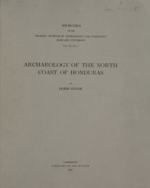
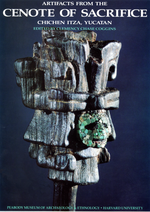
Introduction by Gordon R. Willey
Appendixes by April K. Sievert and Fred Trembour
In this abundantly illustrated third and final volume on the artifacts found by Edward H. Thompson in the Well of Sacrifice, specialists analyze the great variety of objects and debate whether they represent evidence of dateable prehistorical ritual. The collection includes the rare remains of hundreds of textiles, wooden objects, and copal incense offerings that were preserved in the waters of this limestone sinkhole, as well as the lithics, ceramics and bone and shell artifacts commonly found in Maya burials and caches and about 250 mammalian remains. These objects are remarkable for having been cut, torn, broken, and burned before they were thrown into the green waters of the sacred well at Chichen Itza.
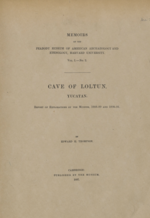
| tozzer_12_redacted.pdf | 57.86 MB | |
| tozzer_11_redacted.pdf | 79.17 MB |
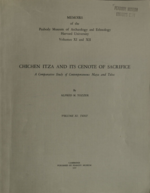
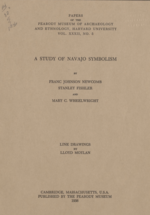
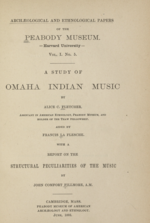
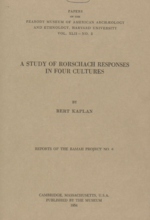
Peabody Museum Papers Volume 42, no. 2
(Report no. 6, Ramah Project)
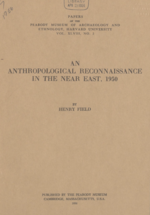

The 1968 excavation of the Neville Site in Manchester, New Hampshire, was a major event in the archaeological history of New England. Analysis of the site extended the known duration of continuous occupation in the region by some 3,000 years and demonstrated early connections between the New England area and the Southeast. The Neville Site was first occupied nearly 8,000 years ago, when the Eastern coastal plain from North Carolina to New Hampshire was essentially a single cultural province. Current excavations in Manchester have reinvigorated interest in the archaeology of New Hampshire and created a demand for this facsimile edition of the original 1976 publication.
The Peabody Museum also publishes Anthropological Literature, a research database that indexes over 660 journals in multiple languages -- a highly recommended research tool.